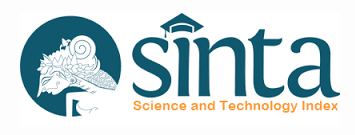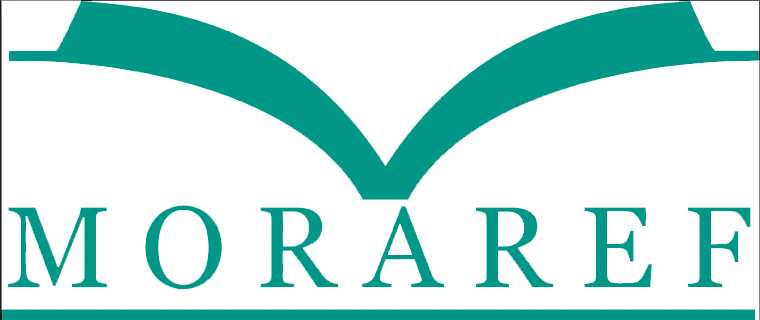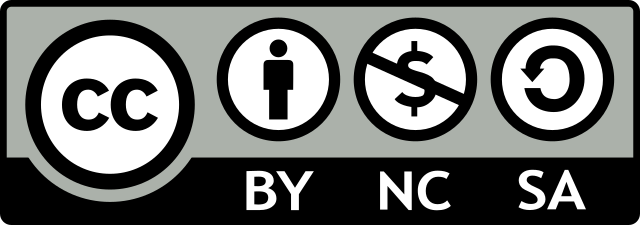Towards Effective Information Provision: A Study on Library User Search Patterns and Selection Criteria
Abstract
Understanding how library users access and utilize information resources is crucial for librarians to enhance their library services. This research delves into the search strategies employed by library users to access information resources and the criteria they use in selecting such resources. The study involves interviews with 20 participants, all final-year students majoring in library science at Alauddin State Islamic University of Makassar. The research reveals that library users commonly employ mental and basic search strategies. This observation underscores the potential drawbacks of relying solely on mental and basic approaches, as it may result in suboptimal outcomes in terms of both quantity and quality of information resources. The study further identifies currency, the minimum acceptable standard, and availability or accessibility as the primary indicators guiding the selection of information resources. Consequently, librarians should ensure that the information resources they provide meet these criteria. The findings emphasize the necessity for librarians to incorporate complex and written search strategies, integral components of information literacy empowerment, into any information literacy program. Additionally, librarians should prioritize the regular updating and accessibility of information resources, recognizing that quality serves as the baseline standard for such resources. Librarians should prioritize updating and accessibility information sources, even if the quality of these sources is at a minimum level.
Downloads
References
Barrett, A. (2005). The Information Seeking Habits of Graduate Students Researchers in the Humanties. The Journal of Academic Librarianship, Volume 31, no. 4, pp 324-331.
Bawden, D. (2001). Information and digital literacies: a review of concepts. Journal of documentation, 57(2), 218-259.
Bawden, D. (1990). User oriented evaluation of information system and services, London: Gower.
Blandford, A & Attfield, S. (2010). Interacting with information. London : Morgan &Claypool.
Bloomberg, M and Evans, G. E. (1995). Introduction to technical services for library technicians. 5th ed. Littletown, Col.: Library Unlimited, 1995.
Bonk, W.J. (1990). Building library collections. 5th Ed. London: The Scarecrow Press.
Borgman, C. L. (2003). From Gutenberg to the global information infrastructure: access to information in the networked world. Mit Press.
Buck, R. (1998). Human motivation and emotion. New York: John Wiley.
Buckland, M. K. (1998). Library services in theory and context. 2nd. Ed. Oxford : Pergamon Press.
Chowdhury, G. G. (2010). Introduction to modern information retrieval. Facet publishing.
Connaway, L. White, D., Lancols, D., & Le Cornu, A. (2013). Visitors and residents: What motivates engagement with the digital information environment? Information research 18 (1),
De Rosa, C., Cantrell, J., Hawk, J., & Wilson, A. (2006). College Students Perception of libraries and information resources. A Report to the OCLC Membership A Companion Piece to Perception of Libraries and Information Resources. Dublin, Ohio: OCLC.
Dervin, B. (1998). Sense-making theory and practice: an overview of user interests in knowledge seeking and use. Journal of Knowledge Management, vol. 2 issue: 2, pp.36-46.
Devadson, F.J. and Pratap, P. Lingam. (1996). Steps for identifying information needs of Clients in Proceeding the tenth Congress of Southeast Asian Librarians(CONSAL X), May 21-25, Kuala Lumpur Malaysia.
Doyle, C. S. (1995). Information Literacy. Emergency Librarian, vol. 22 no 4: h. 30-32.
Emezie, N. A. (2018). Stepping up the ladder to meet user needs: innovative library services and practices in a Nigerian university of technology. Library Philosophy and Practice, 1.
Foster, A. (2004). A non-linear model of information‐seeking behavior', Journal of the American society for information science and technology, vol. 55, no. 3, pp. 228-237.
Gibbons, S. (2013). Techniques to understand the changing needs of library users. IFLA journal, 39(2), 162-167.
Given, L. M. (Ed.). (2008). The Sage encyclopedia of qualitative research methods. Sage publications.
Gusenbauer, M., & Haddaway, N. R. (2021). What every researcher should know about searching–clarified concepts, search advice, and an agenda to improve finding in academia. Research Synthesis Methods, 12(2), 136-147, di https://doi.org/10.1002/jrsm.1457
Haglund, L., & Olsson, P. (2008). The impact on university libraries of changes in information behavior among academic researchers: a multiple case study. The journal of academic librarianship, 34(1), 52-59.
Hughes, B, Wareham, J & Joshi, I (2010). Doctors' online information needs, cognitive search strategies, and judgments of information quality and cognitive authority: How predictive judgments introduce bias into cognitive search models. Journal of the American Society for Information Science and Technology, vol. 61, no. 3, pp. 433-452.
Katz, W. A. (1997). A collection Development: The selection of materials for libraries. Holt Rinerharst and Winston.
Krikelas, J. (1993). Information seeking behavior pattern and concept. Drexel Library Quarterly. Vol. 19 (2) Spring. p. 123-146
Luki, W. (2001). Kebutuhan dan Perilaku Pencarian Informasi Staf Pengajar Fakultas Sastra Univeristas Indonesia dalam Rangka Mengerjakan Penelitian tahun 2000. Depok ; Program Studi Ilmu Perpustakaan, Informasi dan Kearsipan Bidang Ilmu Budaya Program Pascasarjana Universitas Indonesia.
Lyudmila, S. (2020). Analysis of library website users’ behavior to optimize virtual information and library services. Journal of Information Science Theory and Practice, 8(1), 45-55.
Mustafa, M. H., Ahmad, M. B., Shaari, Z. H., & Jannat, T. (2021). Integration of TAM, TPB, and TSR in understanding library user behavioral utilization intention of physical vs. E-book format. The Journal of Academic Librarianship, 47(5), 102399.
Niu, X., Hemminger, B. M., Lown, C., Adams, S., Brown, C., Level, A., … Cataldo, T., (2010). National study of information seeking behavior of academic researchers in the United States. Jurnal of the American Society for Information Science dan Technology, 61(5), 869-890.
Peterson, R. (1994). Learning in the Informatin Age. Educational Technology, Research and Development , vol 42 no. 1: h. 91-97
Pinto, M., & Sales, D. (2008). INFOLITRANS: a model for the development of information competence for translators. Journal of documentation, 64(3), 413-437.
Proffitt, M., Michalko, J., & Renspie, M. (2015). Shaping the Library to the Life of the User: Adapting, Empowering, Partnering, Engaging. OCLC Online Computer Library Center, Inc. 6565 Kilgour Place, Dublin, OH 43017.
Rieh, SY (2002). Judgment of information quality and cognitive authority in the Web. Journal of the American Society for Information Science and Technology, vol. 53, no. 2, pp. 145-161.
Rolla, P. J. (2011). User tags versus subject headings. Library Resources & Technical Services 53.3 : 174-184. https://doi.org/10.5860/lrts.53n3.174
Rowlands, I., Nicholas, D., William, P., Huntington, P., Fieldhouse, M., Gunter, B., Tenopir, C. (2008). The Google Generation: The Information Behaviour of the Researcher of the Future. Aslib Proceeding, 60(4), 290-301
Savolainen, R (2006). Approaches to socio-cultural barriers to information seeking', Library & Information Science Research, vol. 38, no. 1, pp. 52-59.
Savolainen, R (2006). Information seeking and searching strategies as plans and patterns of action A conceptual analysis. Journal Of Documentation, vol. 72, no. 6, pp. 1154-1180
Savolainen, R (2007). Information source horizons and source preferences of environmental activists: A social phenomenological approach. Journal of the American Society for Information Science and Technology, vol. 58, no. 12, pp. 1709-1719
Song, Y. (2009). Designing library services based on user needs: new opportunities to reposition the library. In World Library and Information Congress: 75th IFLA General Conference and Council 23–27 August, Milan, Italy.
Spiller, D. (1990). Book Selection: An introduction to principles and practices. 4th ed. London. Bingley.
Spink, A & Cole, C. (2006). Human information behavior: Integrating diverse approaches and information use', Journal of the American Society for Information Science and Technology, vol. 57, no. 1, pp. 25-35
Tekedere, H., & Goker, H. (2023). The Role of Online Information Searching Strategies and Digital Literacy Levels in Predicting Students' Lifelong Learning Competencies. Participatory Educational Research, 10(4), 1-15.
Tenopir, C, Wang, P, Zhang, Y, Simmons, B & Pollard, R. (2008). Academic users’ interactions with Science Direct in search tasks: Affective and cognitive behaviors', Information Processing & Management, vol. 44, no. 1, pp. 105-121
Urquhart, C., & Rowley, J. (2007). Understanding student information behavior in relation to electronic information services: Lessons from longitudinal monitoring and evaluation, Part 2. Journal of the American Society for information Science and Technology, 58(8), 1188-1197.
Valerie, S. (2016). Is Informastion Seeking Behaviour of Doctoral Students Changing?: A Review Literature (2010-2015), New Review of Academic Librarianship, 22:1,78-106,
Wilson, TD. (2000). Human Information Behavior. Informing Science The International Journal of an Emerging Transdiscipline, vol. 3, no. 2, pp. 49-56
Xu, Y, Tan, BCY & Yang, L. (2006). Who will you ask? An empirical study of interpersonal task information seeking. Journal of the American Society for Information Science and Technology, vol. 57, no. 12, pp. 1666-1677.
By submitting your manuscript to our journal, you are following Copyright and License








